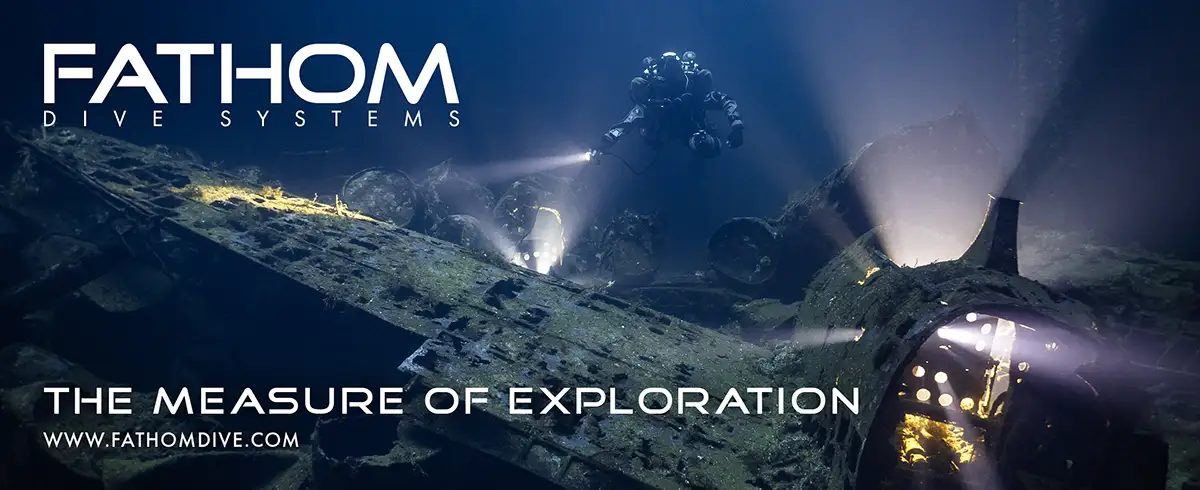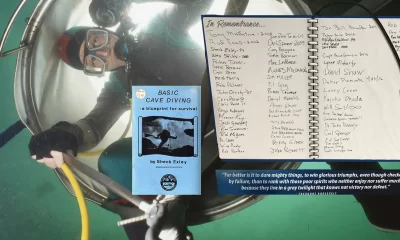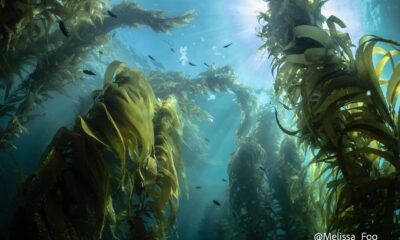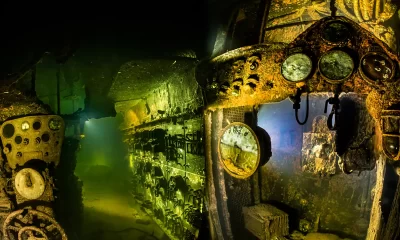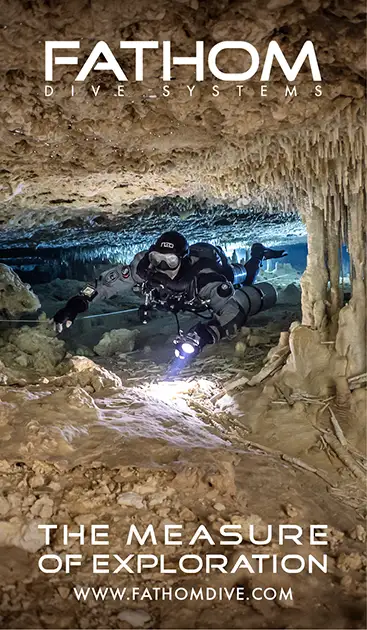Community
A Voice In The Wilderness
Just when you thought you’ve seen it all, along comes underground picture-maker SJ Alice Bennett, who is shedding new light on the dark, moody, twisting karst passageways that form what explorer Jill Heinerth calls “the veins of Mother Earth.” If you’re ready for a new perspective on the ‘doing of cave diving,’ switch on your primary and dive right in.
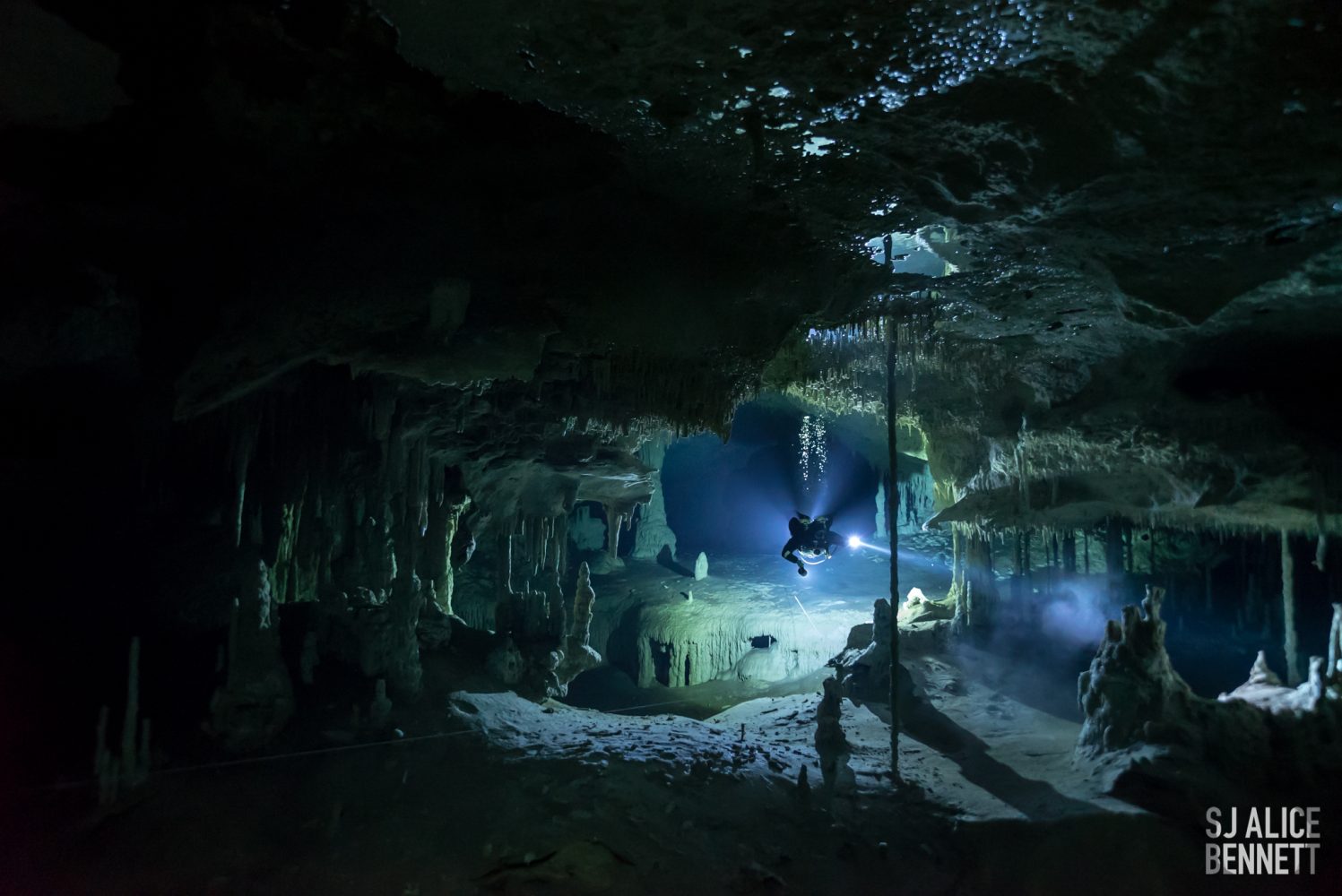
by Michael Menduno
Header photo by SJ Alice Bennett
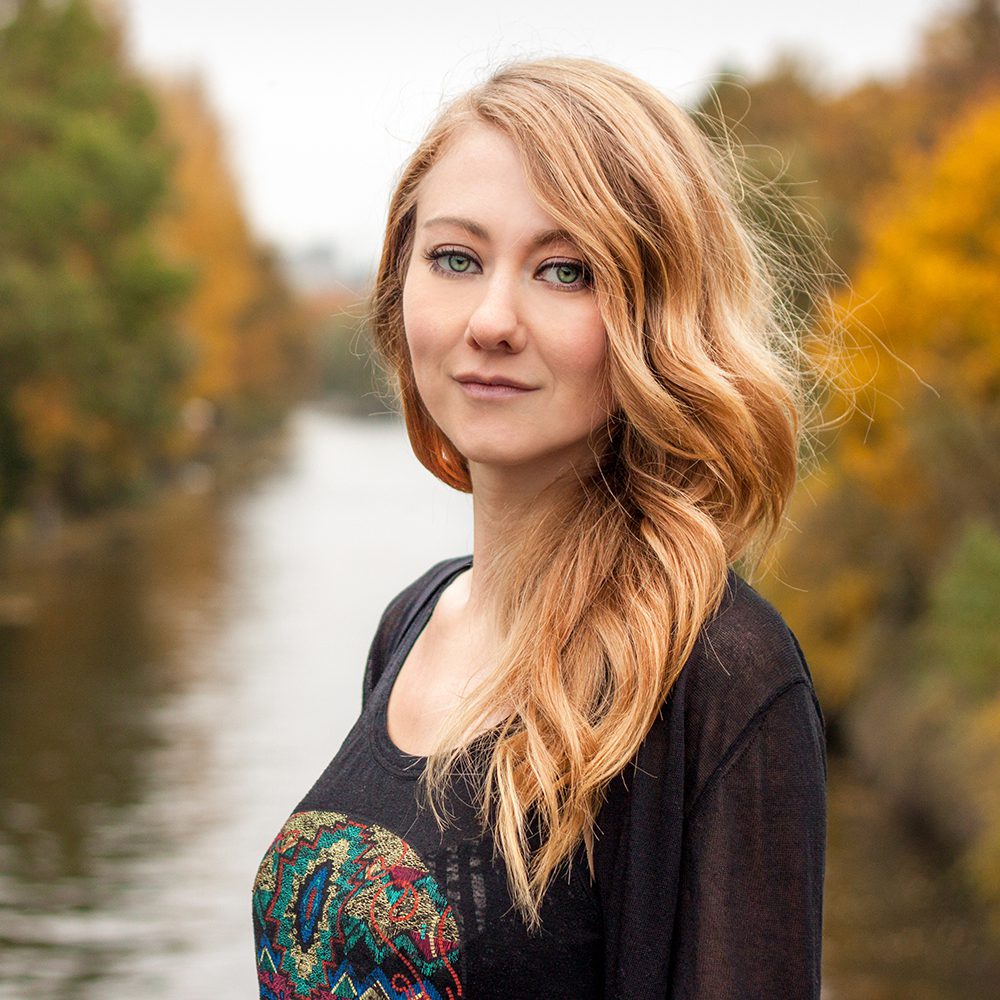
Thirty-four-year old Sarah-Jane “SJ” Alice Bennett is arguably an important new voice, in the niche-y, esoteric world of underwater cave photography. Based in Tulum, Mexico, her pictures—larger than life, moody, dark, spacious, filled with shadow, and shafts and shimmers of light, and replete with cave divers—evoke a deep emotional response in karst-inclined viewers akin to the feeling of being there. At the same time, they invite us to step outside of ourselves and register what we are seeing from a new perspective, “That’s what we look like?” One could say that she captures the ‘doing of cave diving,’ an approach born out of decades of her street aka lifestyle and event photography. Bennett, who was British-born and raised in Berlin, simply calls it “documenting the dive.”
The diminutive, blond, vegetarian cave diver, began documenting the world around her before she turned 10. That was the year her parents—her mom is a passionate photographer—bought her that first 35 mm point-and-shoot for her birthday. “I begged them for ages,” she explained. She has carried a camera with her ever since. Bennett learned to scuba dive two years later through her local dive shop in Berlin; however due to an instructor mix-up she never got her card. Nevertheless, it’s fair to say that these two events set her life in motion.
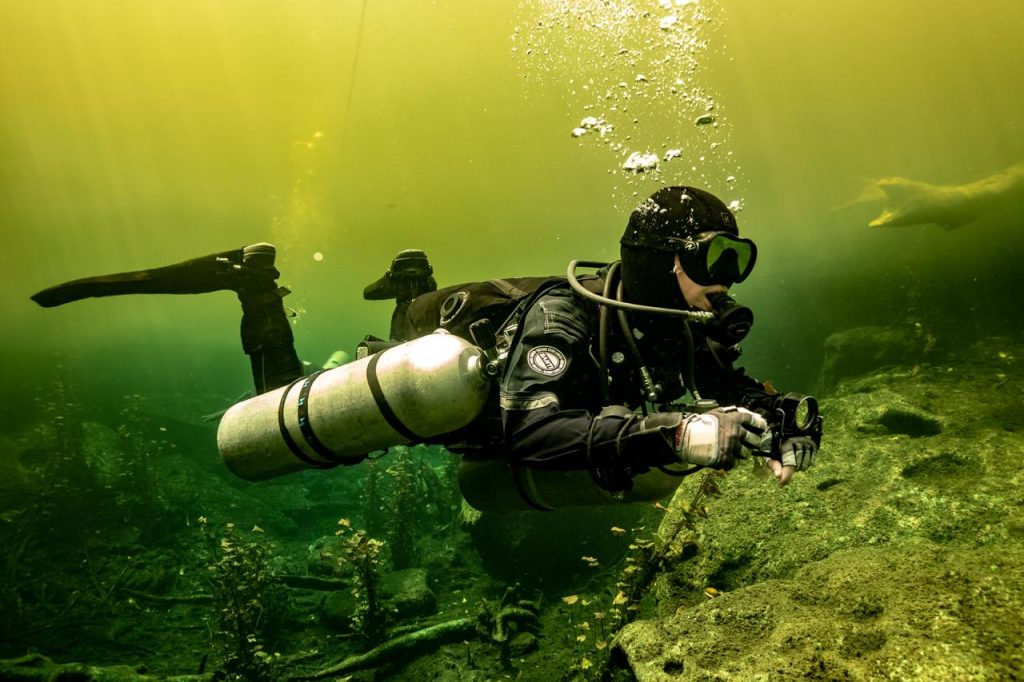
Bennett completed a diploma in Graphic and Communication Design, and then went on to finish her Bachelor of Arts degree in Visual and Motion Design in 2011. Ready to say goodbye to school, she set off for Thailand for a month to finally get her diving certification. That cinched it. She moved to Thailand less than a year later.
Bennett plunged into diving and stepped up her training. She worked as a divemaster, and then became a recreational instructor but said that she didn’t really enjoy it. “I had way more fun just documenting people’s dives,” she explained. From there she got into technical and cave diving and interned at the local tech dive shop. All the while, she built up her freelance graphics art and photography business landing the prestigious global professional services firm Ernst & Young.
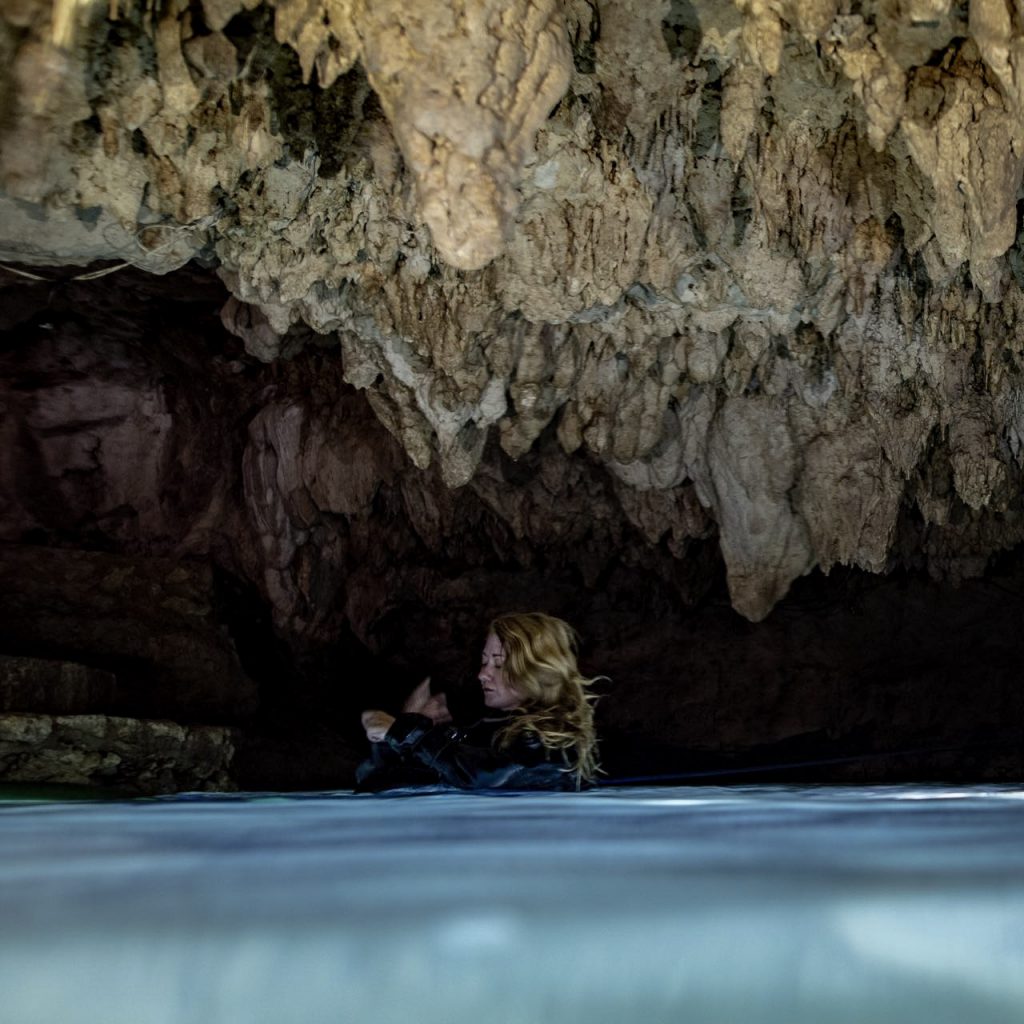
In 2015, flush with cash from a large annual events job, Bennett made a long-awaited trek to Mexico for a few months of cave diving and decided to move there. But not before her major client laid her off. She returned to Berlin for a year and a half, worked hard and saved up money for a new professional grade camera and housing.
She finally moved to Mexico in 2017, where she met her partner Jon Kieren, who is a technical diving instructor, and continued to build her portfolio and her freelance business. This includes making pictures of instructors and visiting cave divers in the karst environment.
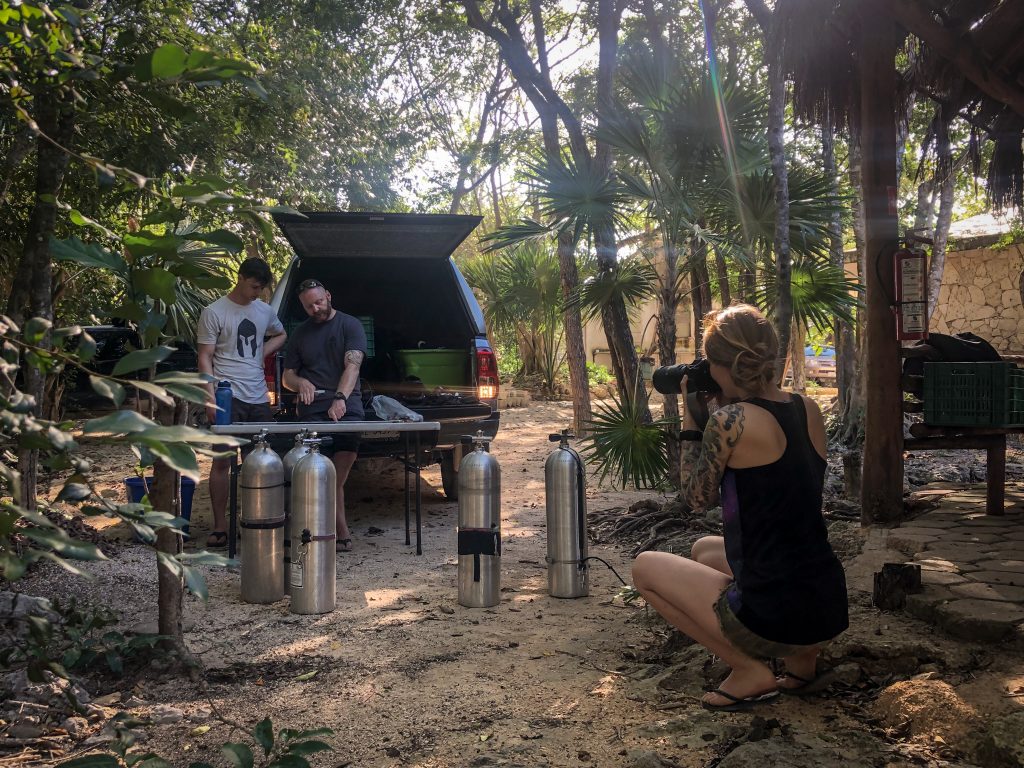
She hopes to be able to document expeditions and exploration projects as well as to add more brand or lifestyle photography into the mix, particularly for diving clients. Last December she did a shoot for Fathom Dive Systems; her pictures are being used on Fathom social media. Last month, one of Bennett’s pictures of two divers in the Blue Abyss section of Sistema Sac Atun was selected as Global Underwater Explorers (GUE) Photo of the Year for 2020.
We recently met up with the underground image-maker and asked her to explain her approach to cave photography and share some of her recent work. Here’s what the photographic phenom known as SJ had to say.
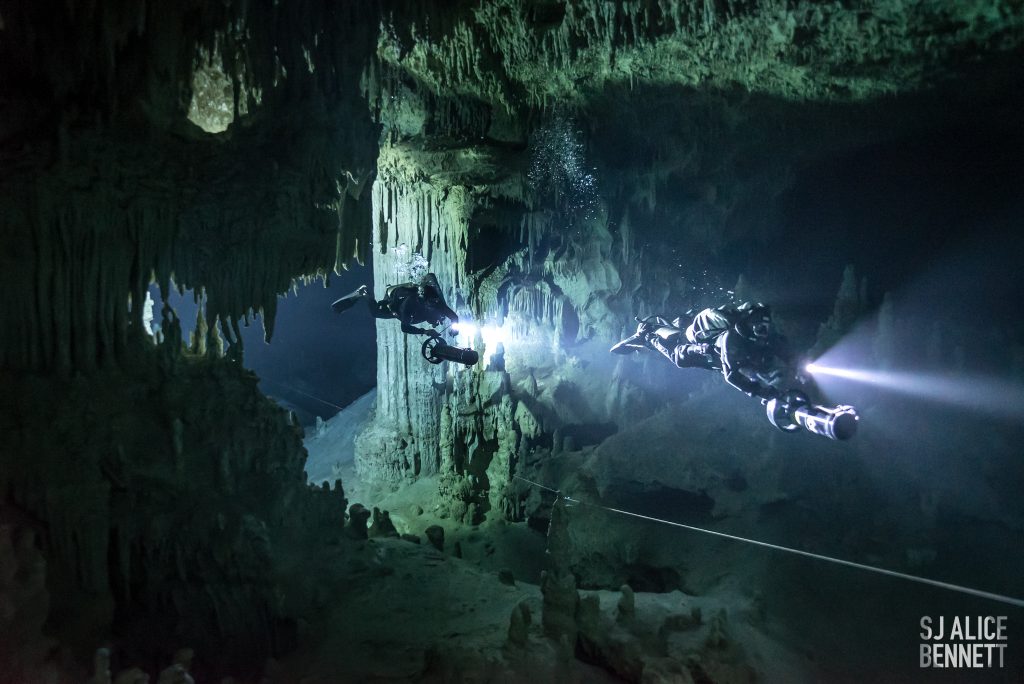
When people ask me, “How do you take those images?”, all I want to answer is, “I swim around and take a photo whenever I see something cool”.
Simplistic as that sounds, it’s pretty much what I do. I suppose I could wax lyrical about light colors and temperatures, as well as shutter speeds and camera housings, but frankly, that’s enough to send even me to sleep. Besides, I don’t regard the technical aspect of photography as the critical element that enables me to connect with an audience, whether it’s fellow cave divers or people who have never seen a submerged cave. Since my photos are fundamentally all about establishing a connection with people and communicating my love of these amazing places to them, I think it’s more interesting—and relevant—to talk about how I capture the caves on camera. The technical aspect, while interesting to some, is simply the means to that end.
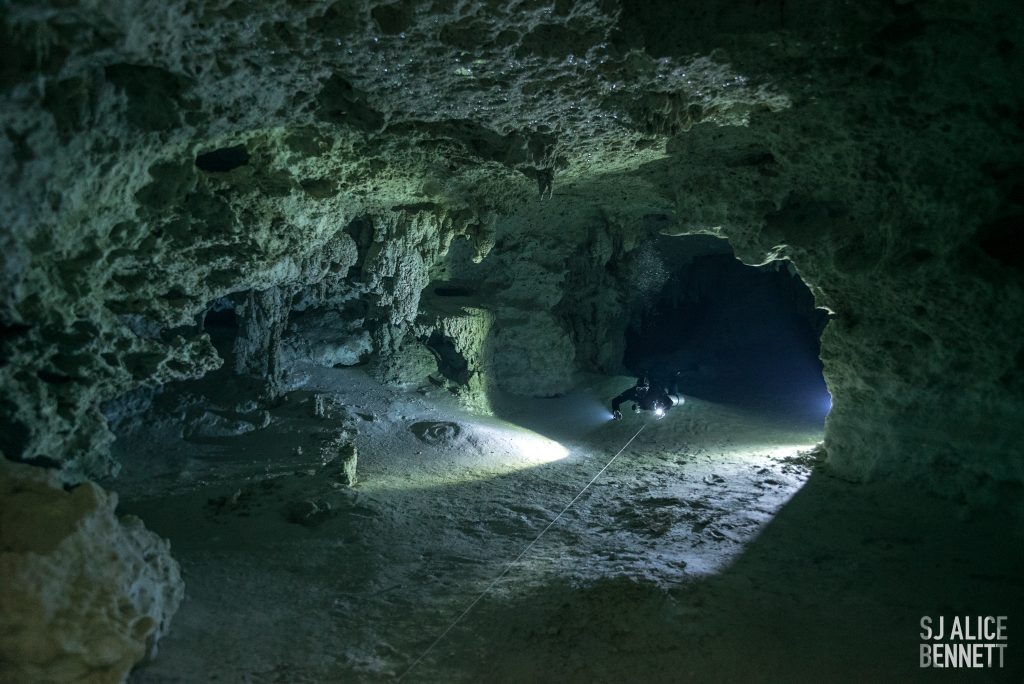
I have always been interested in photography, and like most photographers, I started shooting topside, where it’s comparatively easy to make use of whatever natural light exists, and to simply augment it. I didn’t start shooting underwater until I had garnered several years of topside experience. It was somewhat of a transition, although not immense because there’s still a little natural light to play with, and I had great fun using it as a backdrop for the gorgeous reef critters darting back and forth in front of my lens.
My first foray into cave photography didn’t happen until 2015, some years after I started shooting in open water. I looked at hundreds of cave photos to identify and refine the aspects I both liked and disliked, and although I did manage to speak directly to a few cave photographers about their process, I spent a great deal more time looking at pictures trying to figure out how the images were created. Since I was using a borrowed camera rig and borrowed lights, it was perhaps inevitable that I had to listen to people around me telling me “this is how it’s done”. After mulling it all over, I distilled all the input I had received into one simple principle: “We swim and I press the shutter when I see ‘that special something’”. It worked for me the first time I took a professional camera rig into a cave, and it works for me to this day.

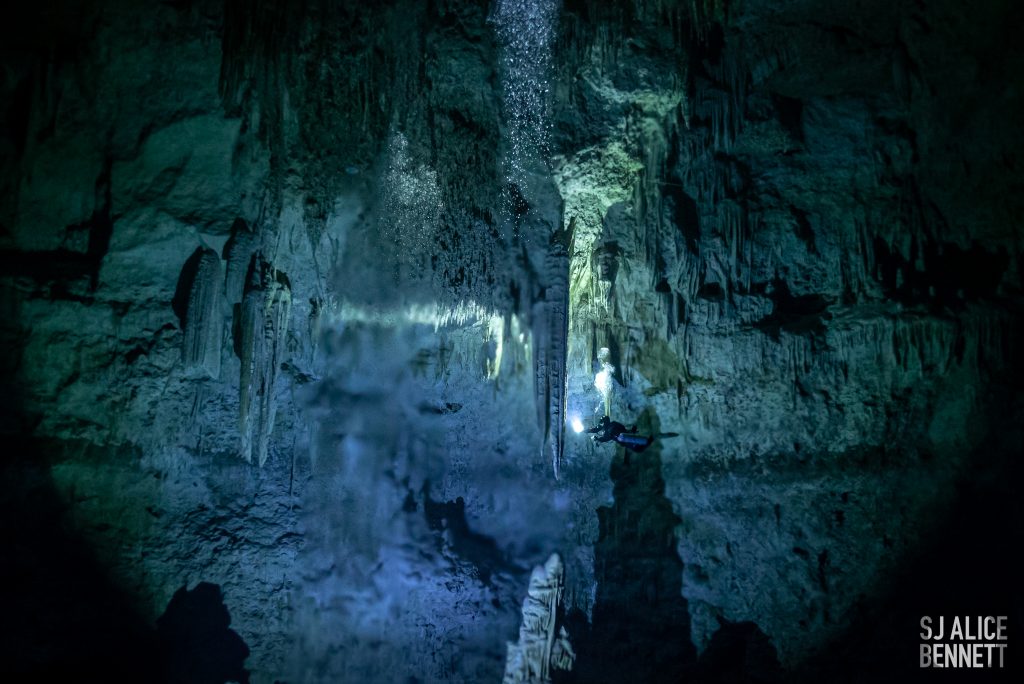
I chose a very familiar, shallow cave for my first cave dive with a professional camera set-up; that gave me the necessary time to not only adjust to swimming with a large rig but also, the opportunity to take photos in a few different parts of the cave. I also had a very familiar and experienced buddy, Tamara, with whom communication was fast and simple.
Instead of doing the more traditional staged setups that I had been urged to do, I decided to just let her swim with a video light and shoot as we went along. Frankly, that decision was partly made for selfish reasons; I didn’t want to miss out on a “real” cave dive! I felt that it would be a waste of a dive and all the effort needed to carry heavy gear in the hot, sticky jungle just to hang out 10 minutes from the cave entrance to get that “perfect” shot. There was, however, also a more altruistic reason for my decision to eschew set-up shots and adopt a more improvisational approach. To my mind, the former approach would have run contrary to the way I perceived cave diving. Since photos have always been my preferred means of connecting with people and showing them what I see, I felt that capturing dynamic shots would be more authentic for me, so that’s how I ran my first ever cave shoot.

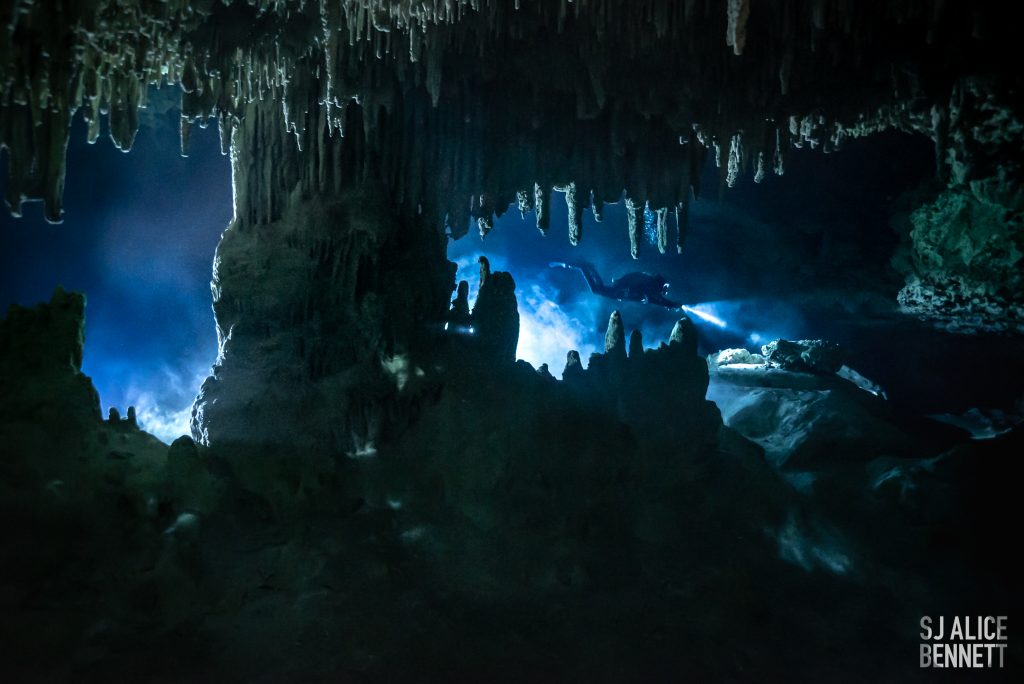
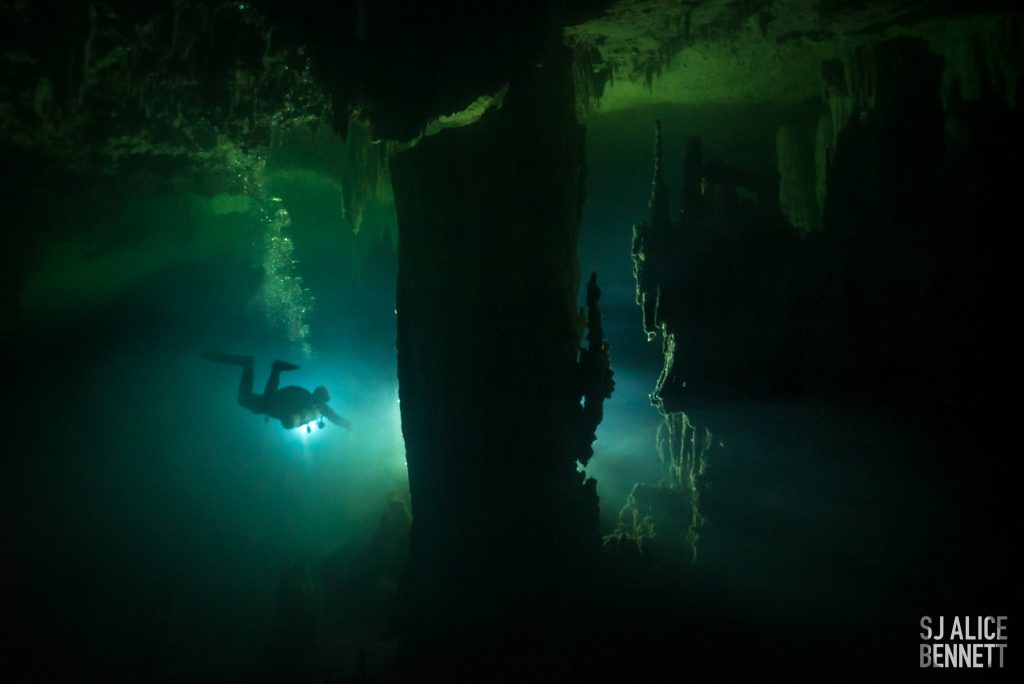
Looking at the images I captured on that first dive, I realize how even back then, I was more fascinated by the cave’s darkness and shadows than perfectly lighting its each and every corner.
That fascination has only intensified, and to this day, a characterizing feature of my pictures is that I use light to highlight the shadows, rather than erase them.
I want to showcase the caves how I perceive them to be: dark, mysterious, and moody places full of ancient beauty and history.
For me, the definition of a “good” photo is one that not only captures the beauty of darkness and shadows of this very alien world but also conveys the diver’s emotions as they literally glide back through geological time.
Painting the cave with shadows is all very well, but since the etymology of the word “photograph” means “drawing with light”, how do you capture darkness when photography only works by capturing light?
While having a dark and black soul definitely helps, I also—more or less—rely on the same techniques I learned ages ago when working as a topside documentary and event photographer. I say “more or less” because there are a lot of different factors that come into play when bringing a big camera rig into a pitch-black and very hostile environment. But certain aspects, like capturing natural scenes of people doing cool stuff (or also very boring stuff when stuck at an international tax symposium), remain constant. Spotting moments that are interesting and capturing people’s emotions and interaction with each other and the environment is the key to photos that we as the viewer can connect with.
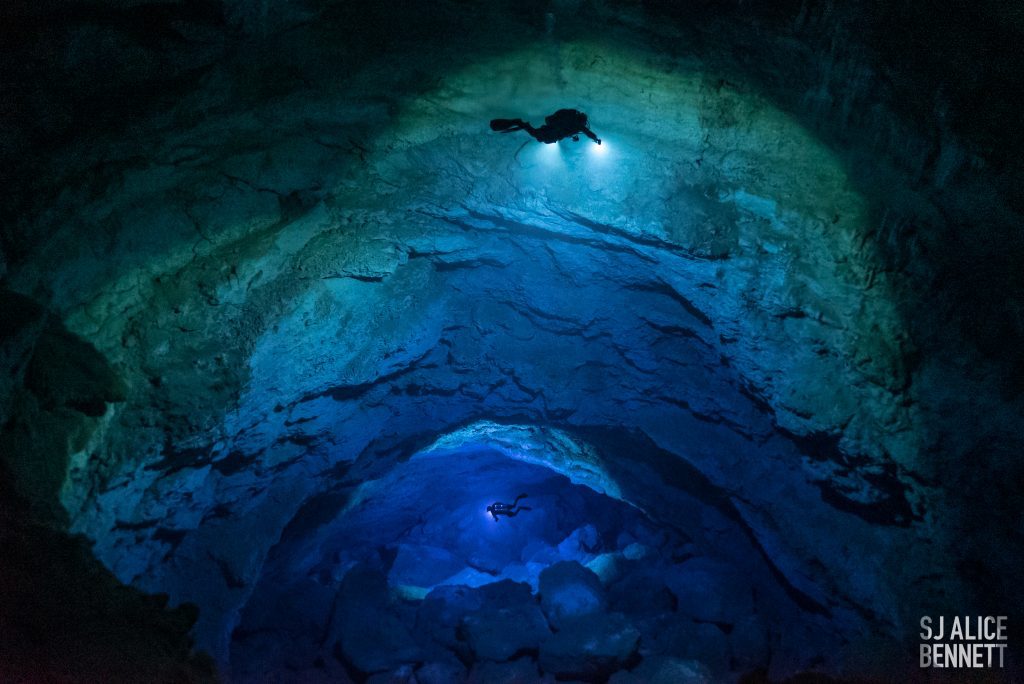
Apart from being proficient and safe as a diver, the most important factor of successful cave photography is using light to create “natural” scenes in a naturally dark environment.
I have learned to do this—and it’s an evolving learning process—mostly by experimenting with different approaches. Shooting on the fly, as I mostly do now, keeps images dynamic and makes it possible to capture random scenes you wouldn’t achieve with staged photos. Planning every aspect of a photo dive is, therefore, something I actively try to avoid. Of course, I stick to the normal rules of planning a cave dive, such as gas management and cave navigation; in fact, these serve as “markers” for dividing the dive into segments and organizing the dive in my mind. They also present the perfect opportunity to capture good “action shots” here and there.
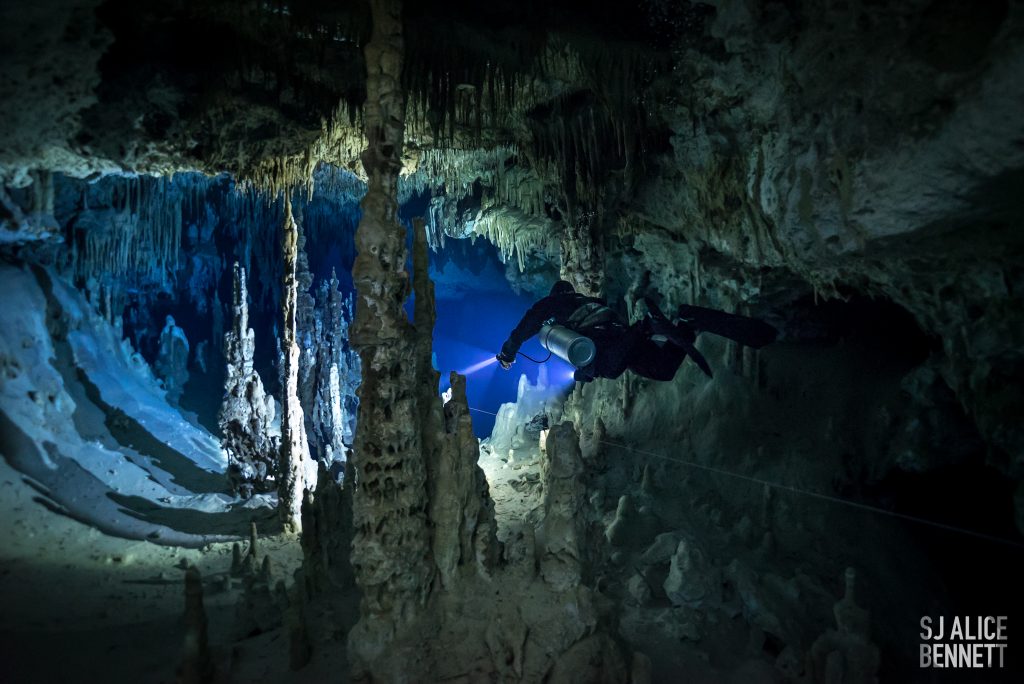
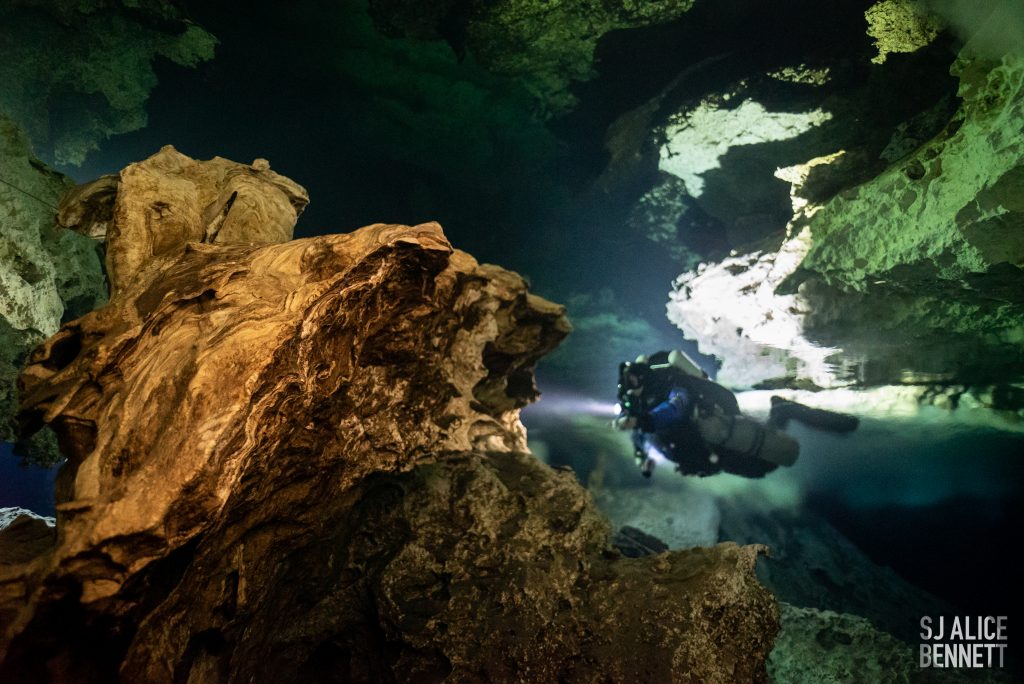
In some ways, one can draw parallels between a cave shoot and a wedding shoot. When photographing a wedding, there are always key landmark events: the exchanging of rings between the bridal couple, their first kiss, and their walk back down the aisle as a married couple. As the photographer, you can’t help but capture those defining moments of the ceremony. But you also have to be flexible and adapt when a perfect scene suddenly changes, like an over-exuberant Auntie Esmeralda blocking the view as she jumps up and down with joy. Awareness of what is happening around you at all times is key.
A finely-honed sense of situational awareness is not only instrumental in getting a good shot but in a cave, it also keeps you alive.


Before a commercial shoot, I always brief models on the use of their hand-held video lights. Of course, you can’t expect people that have never before handled a video light to be perfect at this. The same applies to the lighting assistants with which I work. Even though I have trained them to work with lights to achieve the effects that I want, it is impossible for them to really know what exactly is happening, and what I’m seeing behind the camera. It is definitely a much harder job than pressing a shutter. As the photographer, it’s part of my job to adapt to the scenes they create. I love this aspect of teamwork and am so very grateful for the continued support that makes the photos I take possible.
I believe the interplay between models and lighting assistants working imperfectly together helps generate the most authentic images of a cave dive. For me, the most truthful images depict a well-oiled team working together that experience moments of randomness and have to decide in a split second how to react.
This style of shooting makes it possible to dive with people that have never modeled and worked with lighting before, in caves that you’ve never seen previously, and still achieve amazing results.

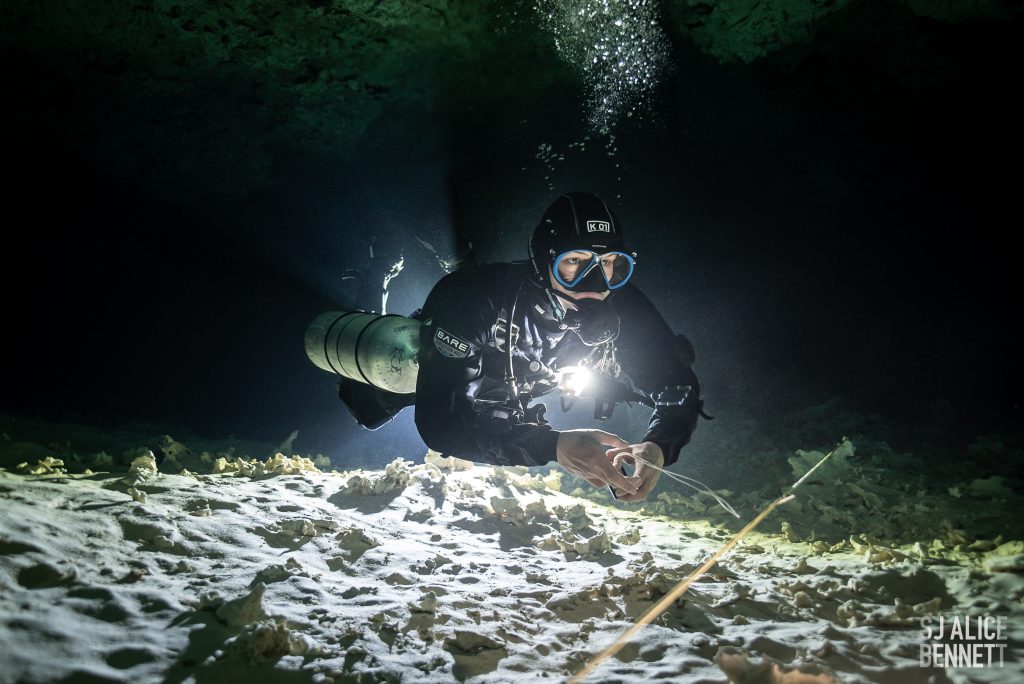
This way of shooting has also allowed me to show a part of cave diving that is often overlooked as a photography subject; training. I can work with a lighting assistant to capture training scenarios in real-time as they play out without interacting with the students or instructors. I’m hoping that these images can show the lighter “behind the scenes” perspective of what cave training is like, making it a bit less daunting of an undertaking for those who might be interested. And it might also be interesting to look back at these photos in years to come to see how cave training has changed and evolved. (And laugh at the old school dry suits we used to wear.)
In the end, I still feel like I’m just swimming around, I see cool stuff, and I press the shutter to freeze time in a frame. Which is what I love doing most in this world.
You Can Find More of SJ Here:
www.facebook.com/SJAliceBennett
www.instagram.com/sj.alice.bennett
www.sjalicebennett.com
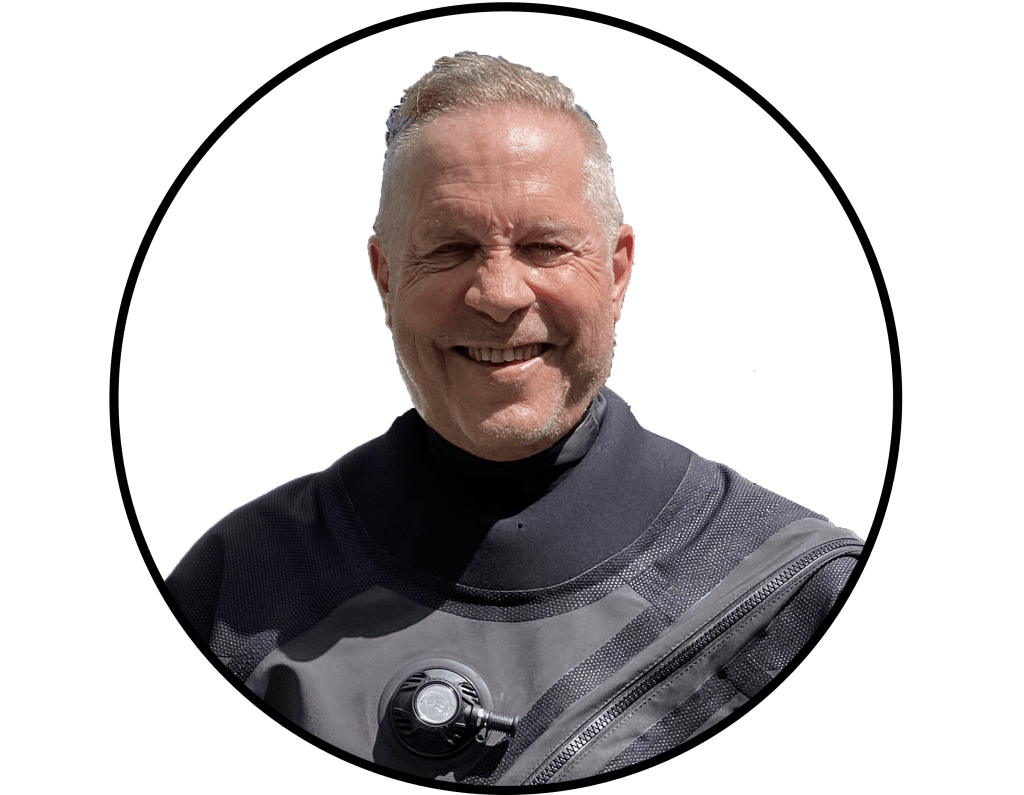
Michael Menduno is InDepth’s editor-in-chief and an award-winning reporter and technologist who has written about diving and diving technology for 30 years. He coined the term “technical diving.” His magazine aquaCORPS: The Journal for Technical Diving (1990-1996), helped usher tech diving into mainstream sports diving. He also produced the first Tek, EUROTek, and ASIATek conferences, and organized Rebreather Forums 1.0 and 2.0. Michael received the OZTEKMedia Excellence Award in 2011, the EUROTek Lifetime Achievement Award in 2012, and the TEKDive USA Media Award in 2018. In addition to his responsibilities at InDepth, Menduno is a contributing editor for DAN Europe’s Alert Diver magazine, and X-Ray Magazine.





